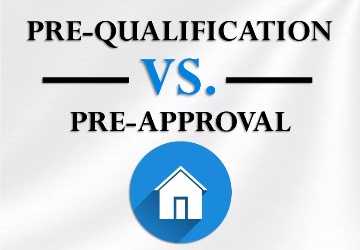Homebuyer Assistance Programs: Supporting Real Estate Accessibility
Author: Tooba
Buying a home is one of the most significant financial decisions most people make in their lifetime. It's an aspiration passed down through generations, representing stability, security, and long-term investment. However, this dream can feel out of reach for many due to high upfront costs, fluctuating real estate markets, and stringent mortgage requirements.
These programs will continue to evolve in 2024, catering to the diverse needs of first-time buyers, low-income households, and other groups struggling to enter the property market. This article breaks down the critical aspects of these programs, examining how they operate, who they benefit, and what potential homebuyers need to know.
Understanding Homebuyer Assistance Programs
Homebuyer assistance programs are initiatives, usually backed by federal, state, or local governments, designed to ease the financial burden of purchasing a home. These programs provide financial support through grants, loans, tax credits, or other assistance to help cover down payments, closing costs, or interest rates.
While these programs are primarily aimed at first-time homebuyers, many support other groups like veterans, single parents, or low-income families. The primary objective is to make homeownership attainable for individuals who may find it challenging to save for a down payment or obtain a mortgage under traditional conditions.

First-Time Homebuyer Programs
First-time homebuyer programs are among the most common forms of assistance. They are typically tailored for people who have not owned a home in the past three years or ever. The definition of a "first-time buyer" may vary slightly depending on the program. Overall, it mainly targets individuals or families looking to enter the housing market for the first time.
These programs often include down payment assistance, one of the most significant barriers for potential homeowners. In 2024, the typical down payment for a home can be upwards of 10-20% of the purchase price—a sum that can be difficult to save, especially for younger buyers already burdened by student loans or other debts. First-time buyer programs aim to alleviate this by offering low payment options, grants, or forgivable loans to cover the initial cost.

Federal Housing Assistance Programs
At the federal level, several vital programs support homebuyers. One of the most well-known is the Federal Housing Administration (FHA) loan program. FHA loans are insured by the government, allowing lenders to offer more favourable terms, such as lower down payments and interest rates, to borrowers with less-than-perfect credit. In 2024, FHA loans remain a critical tool for individuals with stable incomes but might need to meet traditional loans' stringent credit scores or down payment requirements.
Another crucial federal program is the U.S. Department of Agriculture (USDA) loan, which offers zero-down payment options to homebuyers in rural and suburban areas. While many associate these loans with farming communities, USDA loans are available in a surprisingly wide range of regions, making them a viable option for people who want to live outside urban centres. These loans can help broaden the scope of real estate accessibility for those looking to buy homes in less densely populated areas.
The Department of Veterans Affairs (V.A.) also offers veterans, active service members, and their families home loans. V.A. loans have benefits like zero-down payment requirements and no private mortgage insurance (PMI), making them an attractive option for military personnel.

State And Local Assistance Programs
In addition to federal initiatives, state and local homebuyer assistance programs provide region-specific aid. These programs often offer grants or loans to help with down payments, closing costs, and education and counselling services for prospective homeowners.
State housing finance agencies (HFAs) administer many of these programs, each with unique qualifications and benefits. For instance, in certain states, programs might offer reduced interest rates or forgivable loans if the buyer stays in the home for a specified period. Some state programs are also designed to revitalize communities by encouraging home purchases in areas with lower housing demand or higher vacancy rates.
In 2024, many local governments are also looking to tackle the affordable housing crisis by assisting with affordable housing developments, where some homes are reserved for low-income buyers.

Down Payment Assistance Programs
One of the most valuable tools in the homebuyer assistance landscape is the down payment assistance (DPA) program. DPA helps buyers cover the initial costs of purchasing a home, which can often be a substantial financial hurdle. DPAs can come in the form of grants, which do not need to be repaid, or loans, which may be deferred or forgiven after a certain period.
Many states offer DPA programs to qualified buyers, and they often have different income limits or property value caps depending on the region. For example, a common scenario is that DPA loans become forgivable after five to ten years of living in the home, meaning the homeowner does not need to repay the loan if they stay there for a designated period.
The Future Of Homebuyer Assistance In 2024
As the housing market continues to fluctuate in 2024, the role of homebuyer assistance programs remains crucial. With rising home prices in many regions, more individuals find it challenging to save for a down payment or qualify for traditional mortgages. Policymakers at all levels are working to expand the reach and impact of these programs, especially as housing affordability becomes a central issue in many communities.
Innovations in technology are also making it easier for buyers to navigate assistance programs. Online platforms now allow buyers to quickly assess their eligibility for various programs, compare options, and apply for assistance with less hassle. Integrating digital tools in real estate financing will likely continue, making home-buying more accessible for many people.

Conclusion
Homebuyer assistance programs are essential for many aspiring homeowners, particularly in today's economic landscape. By providing financial aid, educational resources, and other support, these programs help break down the barriers to homeownership and make real estate more accessible to diverse populations.
Whether through federal initiatives, state-level assistance, or specialized programs for public service workers, numerous options are available 2024 for those looking to purchase a home. For many, these programs are the key to turning the dream of owning a house into a reality, offering hope to individuals and families across the country as they enter the housing market.



